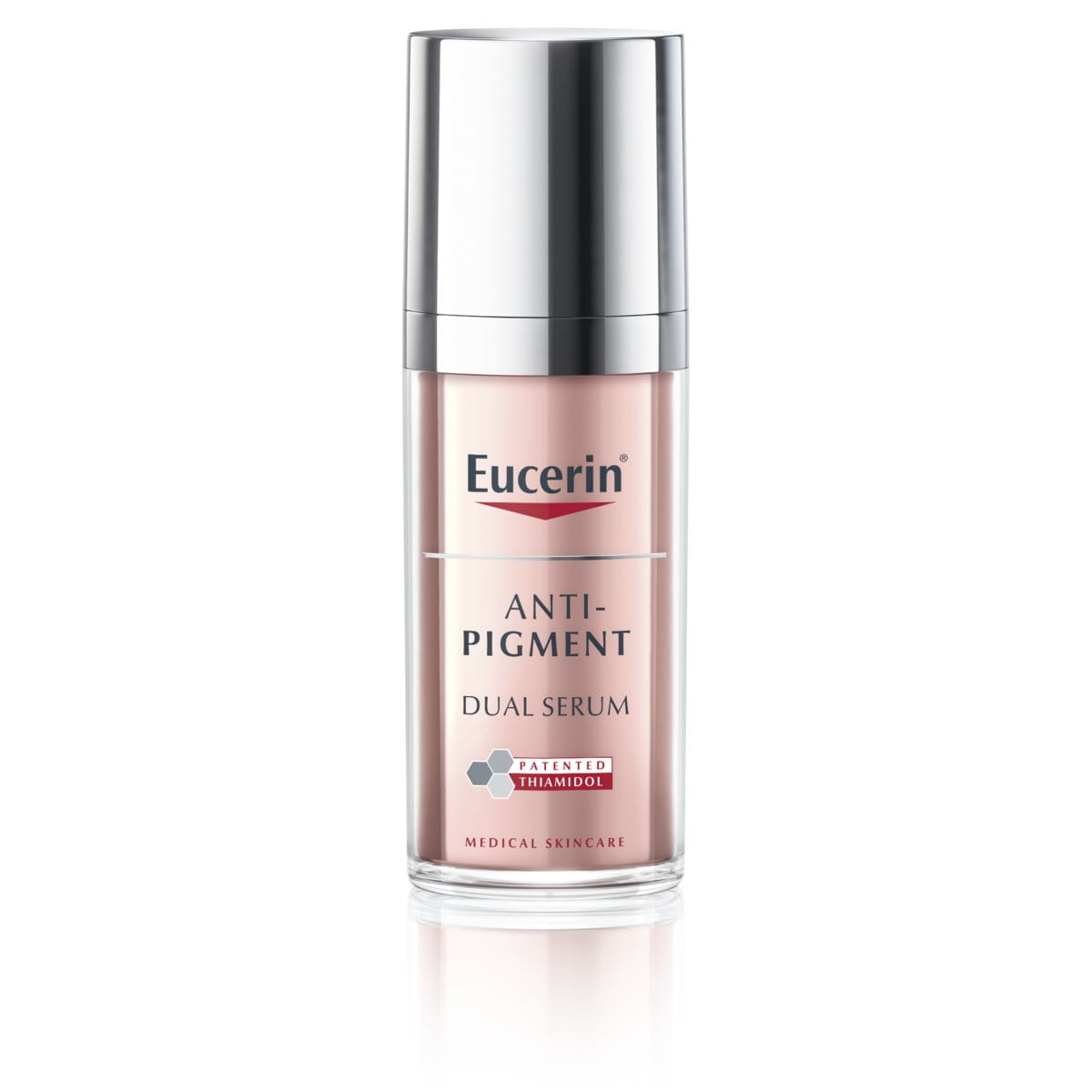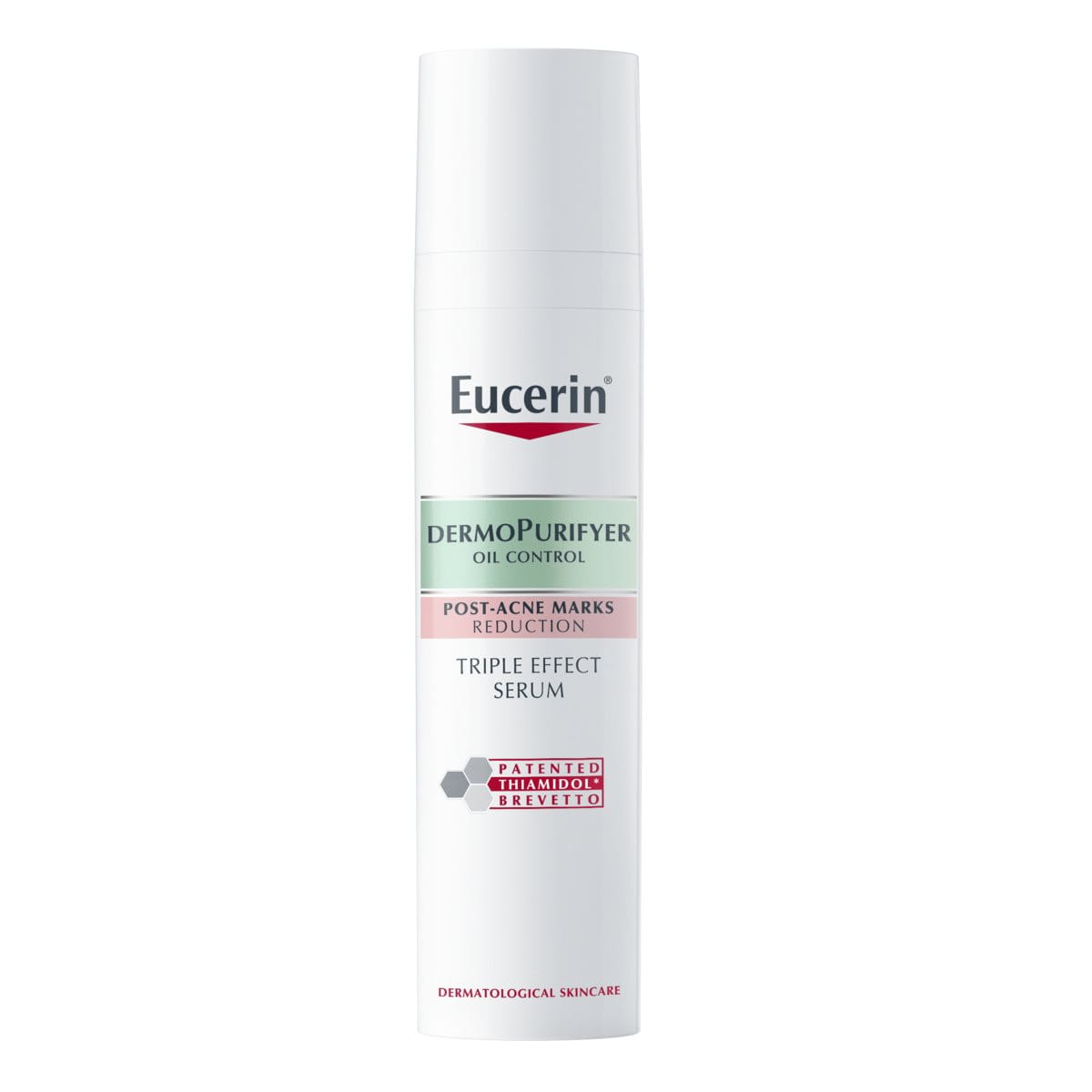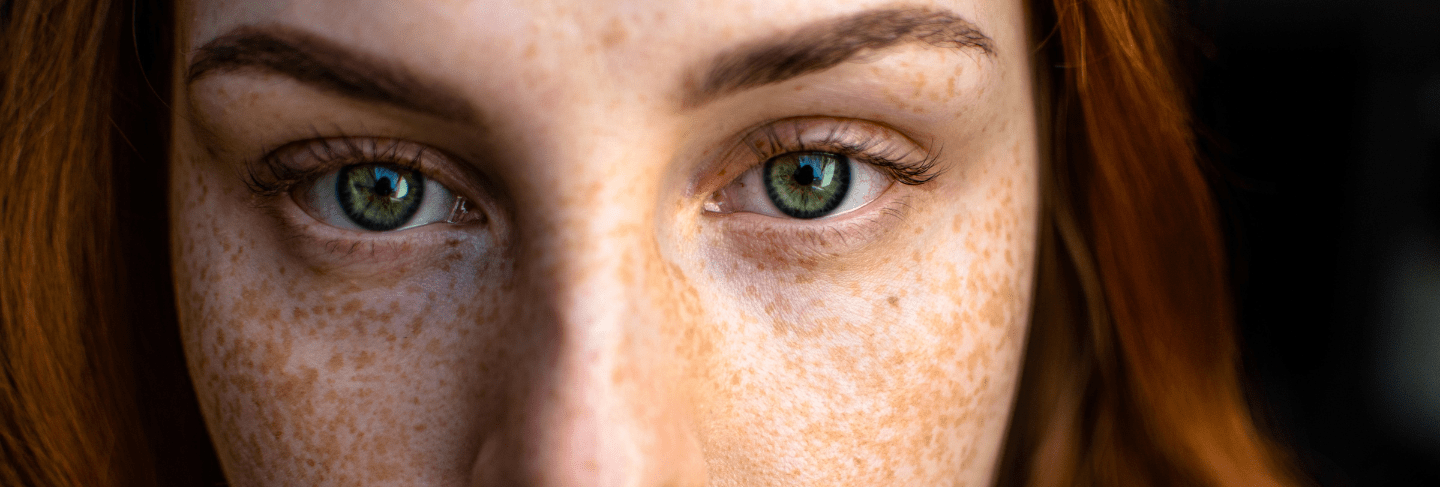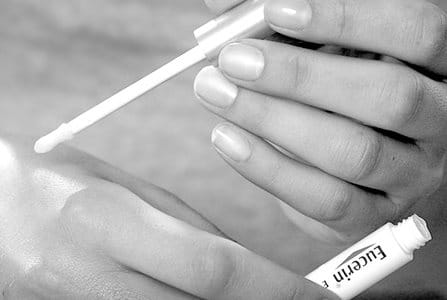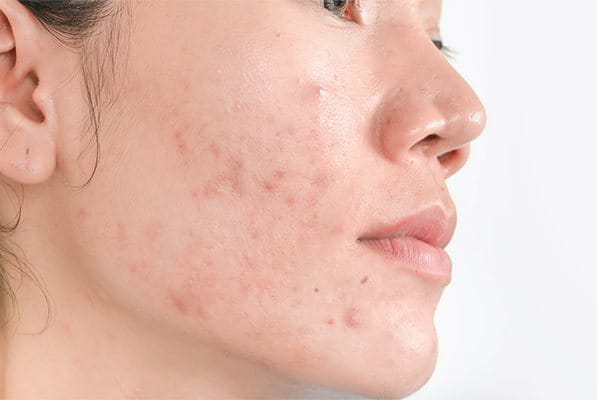Freckles are small, flat, beigey-brown spots on your skin, mostly in areas exposed to sunlight and UV rays, such as your face, shoulder and arms. They appear due to genetics and/or exposure to the sun due to concentrated areas of melanin (the hormone that controls the colour of our skin).
Freckles are usually completely harmless, but like any lesions on the skin it is important to keep an eye on them.
What causes freckles?
Even though nobody is born with freckles, they are genetically inherited and will develop during childhood. In some cases freckles will fade into adulthood.
They typically become clearer during the summer months, because the body produces additional melanin due to the higher levels of exposure to UV rays from the sun. However instead of developing a suntan, people with freckles will see more appear and existing ones become darker.
They are usually very similar in colour, as a tan or light brown colour but this can vary from person to person. They can also be red, dark brown and black or typically darker than the person's skin tone.
Types of freckles
Freckles are a form of hyperpigmentation, where the skin has darkened in patches. Other forms of pigmentation include melasma, post-inflammatory hyperpigmentation and sun spots.
There are two types of freckles that appear on the skin; ephelides and solar lentigines:
- Ephelides are the freckles that appear when exposed to the sun and/or the skin is sunburnt. They can appear on anyone but will be more prominent for those who already have freckles, particularly those who have fair skin and hair colour.
- Solar Lentigines are very similar to ephelides but usually only appear for people over the the age of 40. Also called ‘sun spots’, they are primarily caused by sun exposure rather than genetic make up.
What is the difference between freckles and sun spots?
Although freckles and sun spots can appear similar in appearance, they can differ in their development and colouring:
- Freckles appear mostly due to genetics and are amplified by sun exposure, whereas sun spots develop purely through years of UV stimulation.
- Freckles become visible from the age of 2-to-3 years old after children have been exposed to the sun. While freckles may fade with age or during winter when UV rays are less intense, sun spots will accumulate with age - typically over the age of 40 - and will not fade even during winter.
- Freckles are around 1 - 2 millimetres in size, and are usually smaller than sun spots, which are usually larger than 2 millimetres.
- Freckles will appear on the face, neck, chest and arms. Sunspots will appear in all of these areas and those that are consistently exposed to the sun, such as forearms, back and shins.
What is the difference between freckles and moles?
Moles are typically larger and darker than freckles, and can be raised. They appear from birth, during childhood or into adolescence. They are round in shape with well-defined edges and are very unlikely to disappear over time.
Can freckles be cancerous?
Freckles and sun spots are nearly always harmless and do not pose any danger, but sometimes they can be similar in appearance to some types of skin cancer.
Moles on the other hand can potentially pose more of a threat for melanoma skin cancer than freckles. This does note however mean they are always dangerous. Most moles are usually harmless, but they do need to be monitored for any changes in size, shape or colour as they can turn cancerous.
People with freckles typically have fairer skin and are at greater risk of sunburn, which can eventually cause skin cancer and other problems later on in life. You can read more about the why and how to protect yourself from sunburn here.
How to get rid of freckles
Freckles do not need to be treated as they very rarely pose a threat. While many people embrace their freckles, like the rest of your skin it is important to take care of them as they can be the first sign of skin damage from UV rays.
The Eucerin Anti-Pigment range can help reduce areas of pigmentation on your skin. You can learn more about how to reduce freckles and dark spots in this guide here.
Our brand values

We deliver a holistic dermo-cosmetic approach to protect your skin, keep it healthy and radiant.

We work together with leading dermatologist and pharmacist partners around the world to create innovative and effective skincare products they can trust and recommend.

For over 100 years, we have dedicated ourselves to researching and innovating in the field of skin science. We believe in creating active ingredients and soothing formulas with high tolerability that work to help you live your life better each day.
